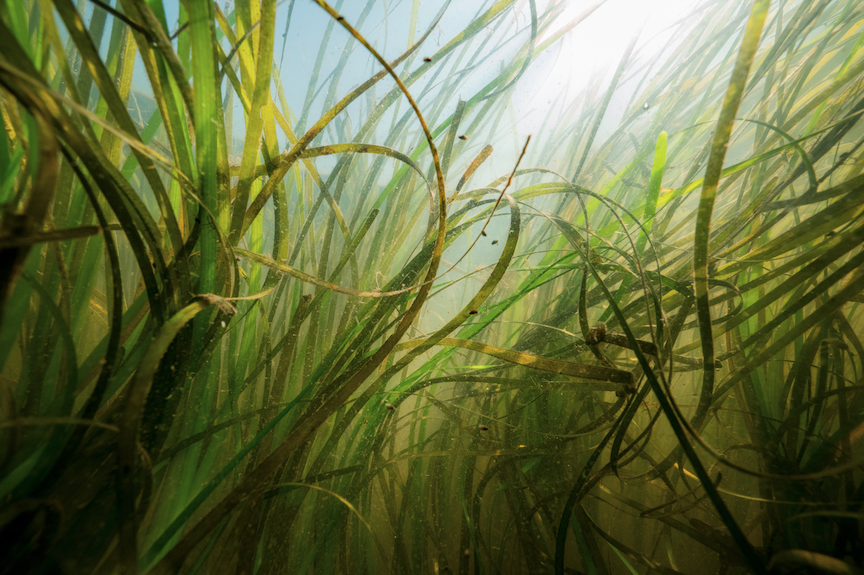Many people enjoy observing the osprey nest at the Great Bay National Estuarine Research Reserve (watch here), which shares live, remote camera footage for bird aficionados. However, this year, those people were dismayed to see the impact of all the spring and summer rain on the osprey family living in that nest. Due to all the rain, the parents had to fly further and further away to find food for their hatchlings, because they could not hunt in the extremely turbid waters of the Great Bay. Observers noted that the adult birds were bringing back freshwater fish not seen before. Unfortunately, as a result of all the stress, none of the babies survived. Reserve staff are hoping that the adult osprey return next year and that the weather is better.
Better weather—in other words, less rain—will not just benefit the osprey; it will benefit the eelgrass as well. Much of the eelgrass in the western side of the Great Bay disappeared this summer, an event that has not occurred since the late 1980s. In contrast, eelgrass beds in Portsmouth Harbor and other coastal areas have fared much better, indicating impacts from river discharge, connected with yet another year of much higher than normal precipitation.
The loss of so much eelgrass Is especially disappointing, given the recent reductions in point source nitrogen, implemented by many of the municipalities in the area, which have improved wastewater treatment facilities. On the other hand, nonpoint source nitrogen loading, from stormwater and other sources, is likely to have increased in 2023 due to all the rain.
Precipitation during the growing season, from April 1 through the end of August, has been increasing over the past decades. In this century, the most rain occurred in 2006, the year of the infamous Mother’s Day storm. The amount of rain in 2023 is second only to that year. 2021, also an uncommonly rainy year was the third highest amount of precipitation this century.
The increased precipitation also brings in more sediment and CDOM, or chromophoric dissolved organic matter, which block light from reaching eelgrass blades, underscoring that nitrogen reduction is important, but not sufficient on its own as a strategy for keeping eelgrass healthy in the Great Bay. Since better stormwater management and increased conservation of open space reduce all three light-limiting constituents (nitrogen, sediments, CDOM), these are high-priority strategies for eelgrass health.
Portsmouth Harbor is one of the few places where eelgrass has been trending better since 2010. It is also one of the areas in the estuary where light penetration has not worsened and may have even improved after the rainy years of 2006 through 2010. In addition, the eelgrass beds closer to the ocean do not suffer temperature stress like their counterparts in Great Bay. So, while there is less eelgrass in Portsmouth Harbor due to the lack of shallow areas, compared with Great Bay, the coastal area seems much better for eelgrass, especially during rainy years.
Curious about trends for eelgrass over time? Visit the State of Our Estuaries website to learn more about eelgrass and other indicators of estuarine and watershed health.

